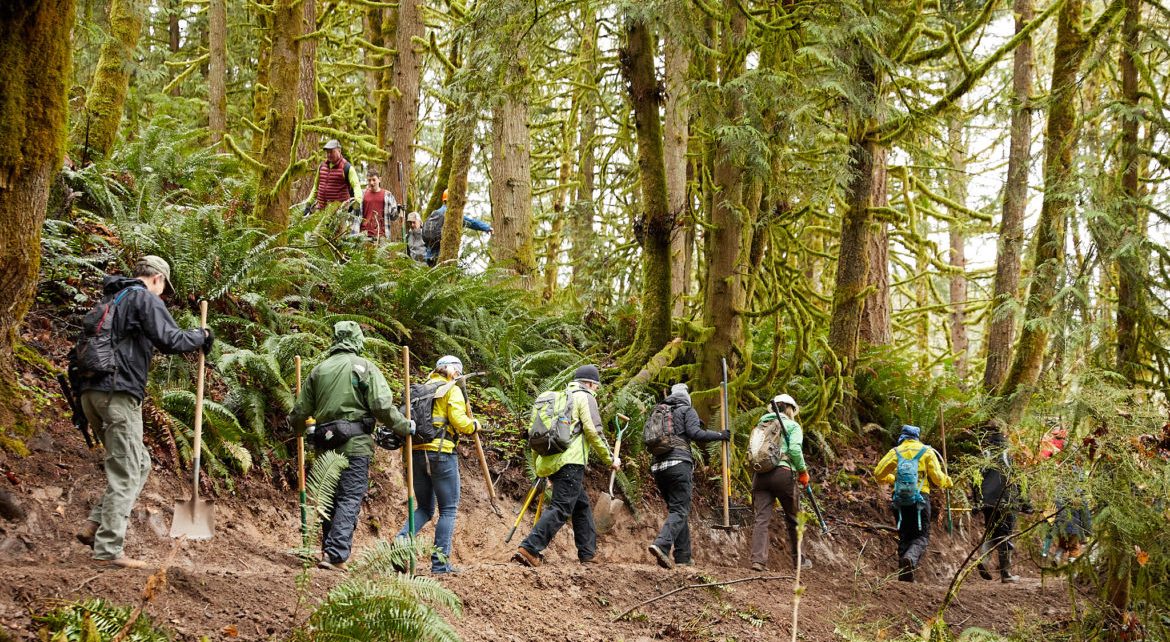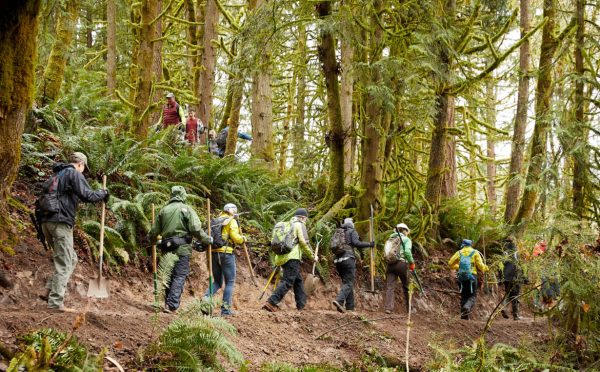
You may have seen our recent article on two enduro athletes from Portland, Oregon, whom Specialized is sponsoring for both their racing and trail building efforts. The Northwest Trail Alliance (NWTA) president, Bob Lessard, reached out after reading the piece to add some context around the trail system they are all working on.
The system in question is called Rocky Point, named after the county road that the trails emanate from, above Scappoose, Oregon. Located a flat 20 highway miles from the Pacific Northwest’s epicenter for coffee, cannabis, beer, and bikes, some folks might be keen to ride to their closest trail network. For most riders in the metro area, cars remain a necessary component of mountain biking. While Portland is praised as a “bike friendly city,” the phrase mostly applies to commuting and road riding, not mountain biking.
There have been trails in the Scappoose area for as long as anyone can remember, and the NWTA recently stepped up to make them official — and hopefully improve the system in the process. Lessard mentioned that when the NWTA originally met with the trail builders at Rocky Point, they were not necessarily stoked to see the organization taking control of their hand-dug system. Today, the relationship has blossomed, and one of the initial trail builders is now on the group’s board of directors.
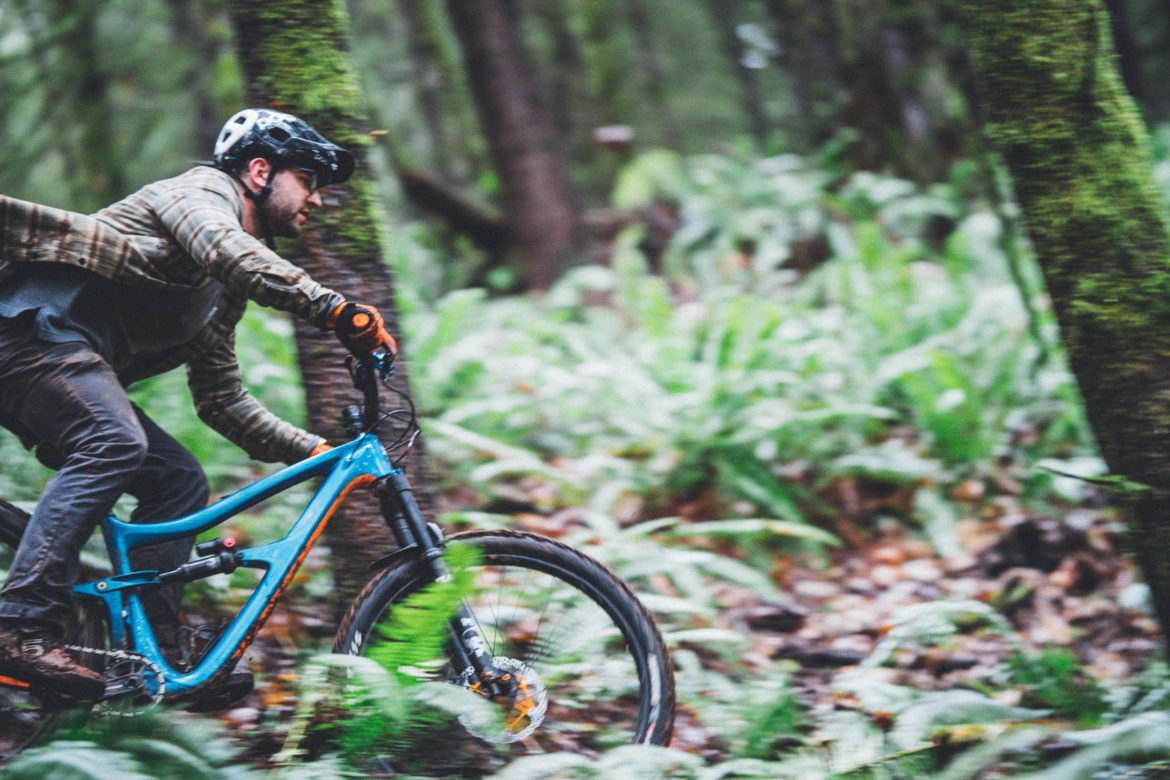
The trail system on Rocky Point road began as many do, with riders building unsanctioned trails in soil that’s owned by a timber company. In this case, that timber company is a lumbering giant with the third largest production capacity in the world, named Weyerhaeuser. In the past, the tree farming behemoth had developed a system where riders could pay for one of a limited number of permits to ride on the land, though the company was growing weary of the increasing number of people riding and sculpting singletrack in the area. As this story always goes, they saw mountain bikers as a liability risk.
In 2019 the NWTA swooped in with a proposal to manage all 3,000 acres (1214 ha.) of land in the area, and Weyerhaeuser accepted, with some reasonable stipulations. Members of the NWTA are now allowed to ride the Rocky Point trails whenever they like, and the organization is hosting monthly dig days to expand the current 15-20 miles of singletrack into a planned 70 mile connected system. They recently created a second parking lot alongside the road, and have another one planned at the base of the trails to prevent congestion.
The tradeoff is that everyone who enters the property has to be an NWTA member with a signed liability waiver. The NWTA then sends monthly updates to Weyerhaeuser with the names and applicable info for each of their members. Given that the next closest trail system, L.L. Stub Steward State Park, is an additional 20 minutes further from the city center, and Sandy Ridge a full hour out of town (in low traffic), NWTA membership seems like a near mandatory move for Portland area dirt riders.
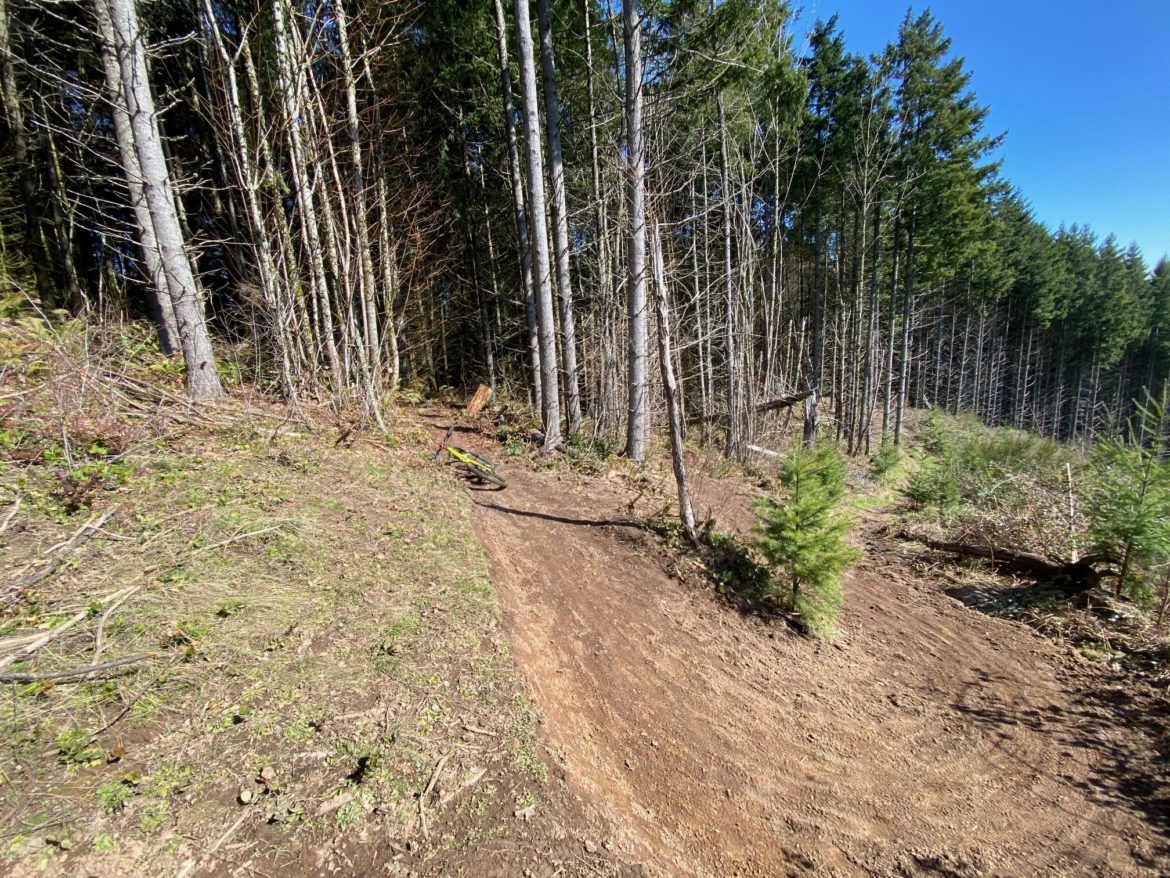
The NWTA has been around for a few decades, and the organization recently made a difficult decision to leave the IMBA fold, moving all advocacy, management, and planning decisions under their local group governance.
We are doing this for several reasons, but cost is the most significant reason. Currently, IMBA takes a membership processing fee for each signup. For small organizations, it’s a fair price to pay, and worth it to not have to maintain a membership database and a payment system. NWTA has grown a lot in the last few years though. We have been watching large payment processing fees accumulate and go to IMBA instead of our local trails. This will no longer be the case. We will keep 100% of revenues.
The trail organization is currently facing some of the best challenges trail advocates can have. There are too many volunteers for the number of crew leaders, so the NWTA is training crew leaders to help lead dig days and guide the creation of new trails and connectors in the system.
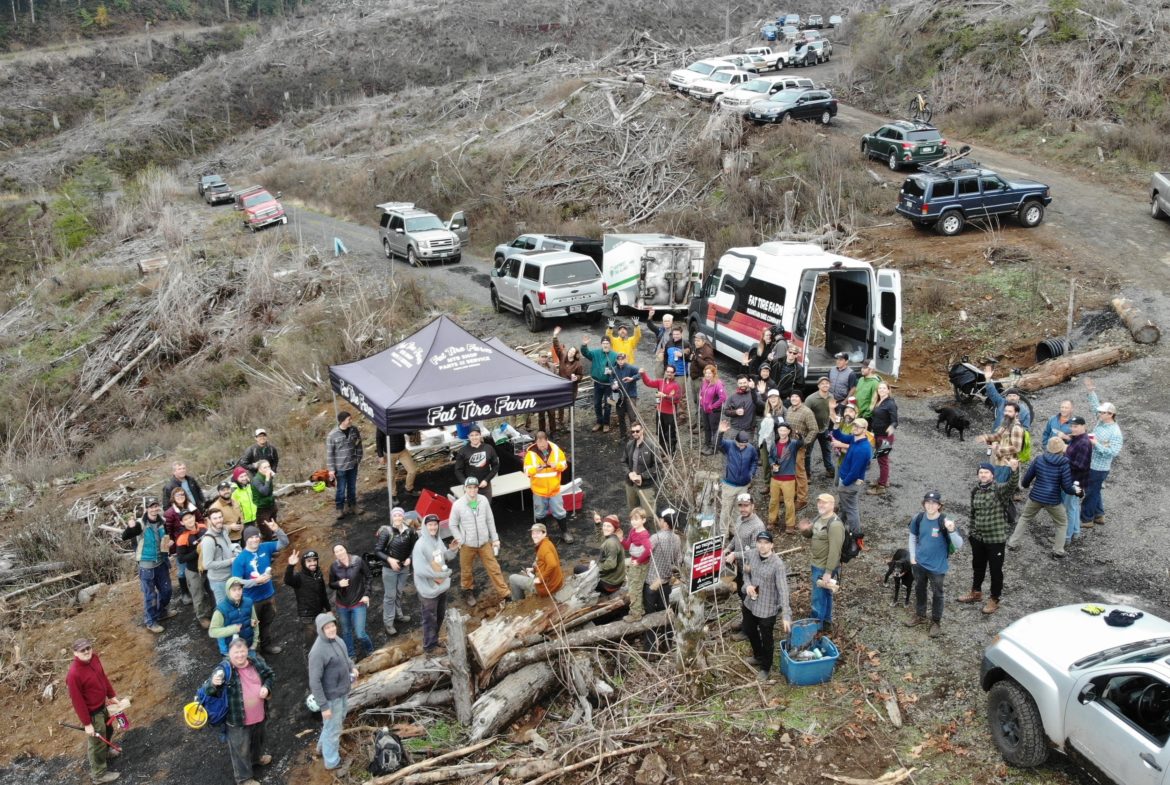
Anyone who has ridden around Portland has likely spotted the magical 5,000 acre (2023 ha.) emerald green space at the northwestern edge of downtown. Forest Park is packed with beautiful ribbons of singletrack that wind along for up to 35 miles at a time through stands of red cedar, douglas fir, vine maple, yew, and big leaf maple trees. The park offers citizens a place to recreate away from traffic, to enjoy nature, breathe fresh air, and to participate in activities like running, jogging, and all the usual things people would want to do in a forest full of trails — except mountain biking.
While there are a few road-bikeable fire roads in the park open to bikes, there is only one brief segment of singletrack where bikes are permitted, and most often you’ll see folks on cyclocross or road bikes shredding it since there is a heap of road riding required to reach the 1.2-mile-long trail. In a hopeful move, the NWTA recently partnered with Portland Parks and Recreation to manage the city’s “soft-surface cycling trails.” While there are no immediate plans to add trails inside city limits, the partnership does mean that the NWTA is able to maintain and improve existing trails on Powell Butte and in Forest Park, while opening up future conversations around improving mountain biking in Portland.
That’s a whole lot of positive work happening around PDX over the last year, and we can expect more growth and enthusiasm in the local mountain bike community as citizens see that nearby trails are finally becoming a possibility.
